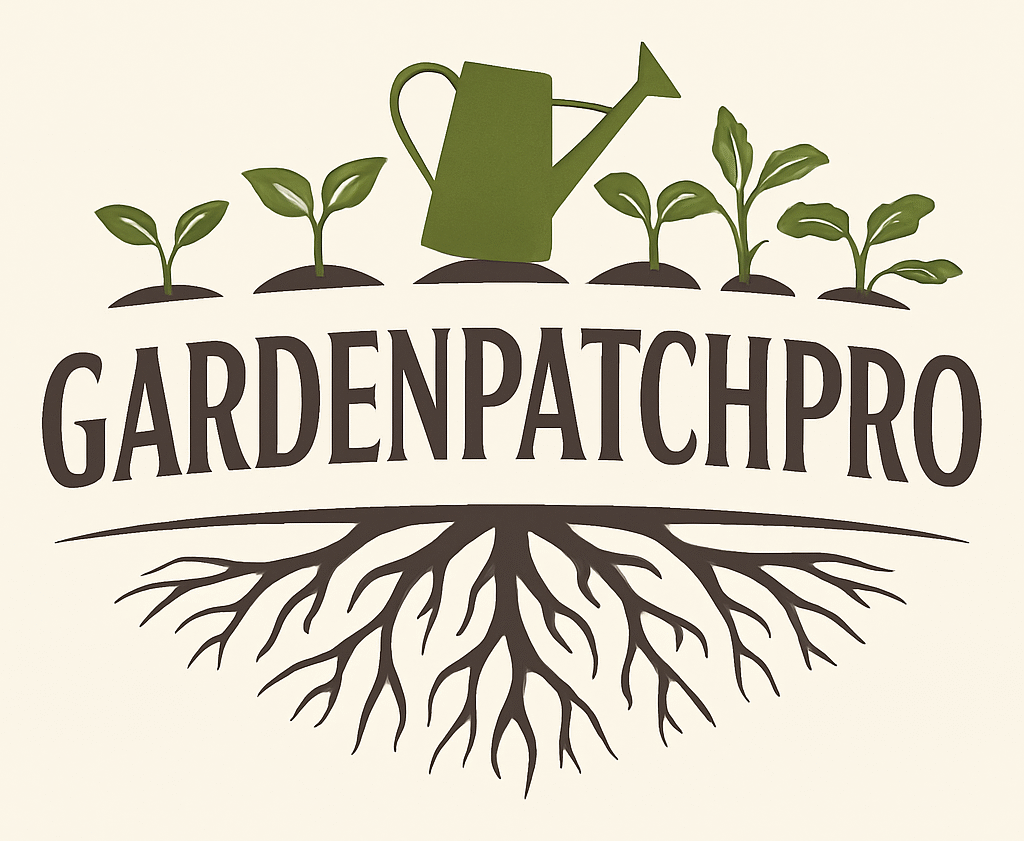15 Small Vegetable Gardens for Efficient Urban Growing Solutions
Growing vegetables in small spaces is becoming more popular as people look for ways to enjoy fresh produce at home. Whether someone has a tiny yard, balcony, or patio, it’s possible to create a productive garden without needing much space.

Small vegetable gardens offer practical solutions for maximizing limited areas while still providing fresh, healthy food. This article explores easy ideas designed to help gardeners make the most of their small growing spaces.
1) Container gardening with tomatoes
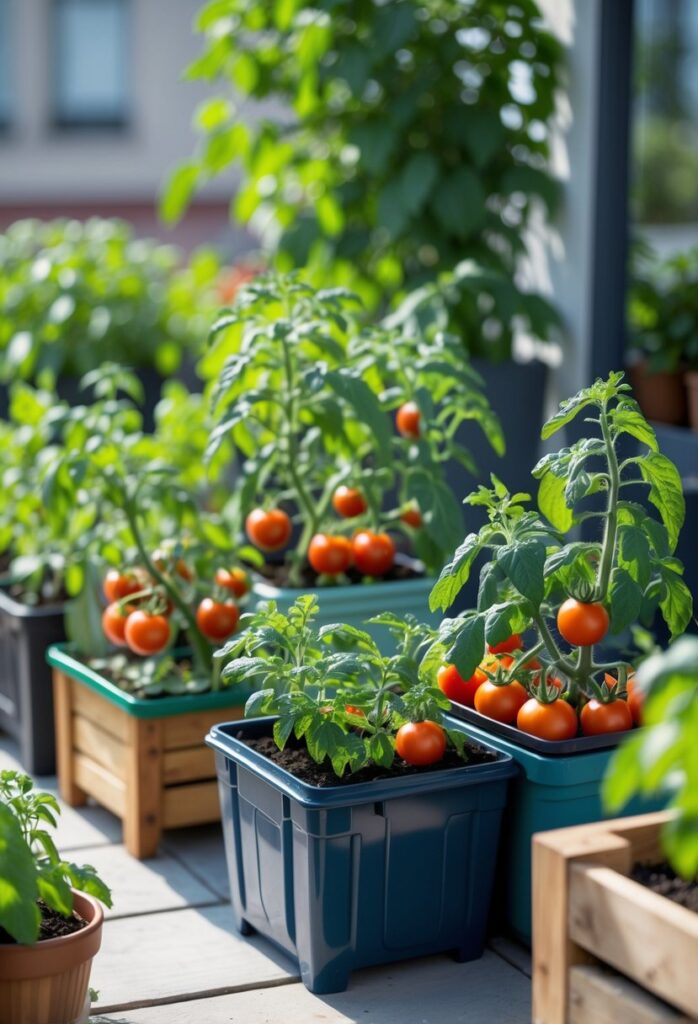
Tomatoes are well-suited for container gardening. They need a container that holds at least 5 gallons of soil to grow well. Smaller containers may not provide enough space for roots.
The plants require plenty of sunlight, ideally six to eight hours daily. They should be placed where air can flow freely around the containers. This helps prevent diseases.
Choosing the right tomato variety is important. Small determinate or microdwarf types work best in limited spaces. These varieties grow compact plants and produce fruit without overwhelming the container.
Watering needs to be consistent. The soil should be kept moist but not soggy. Good drainage in the container helps avoid root problems.
Using quality potting soil and adding fertilizer supports healthy growth. Tomatoes grown in containers can produce fresh fruit even in small areas like balconies or patios. This method allows gardeners to enjoy homegrown tomatoes when garden space is limited.
For more detailed tips on tomato container gardening, see 15 Must-Grow Tomato Varieties for Small Containers.
2) Vertical trellis for climbing beans
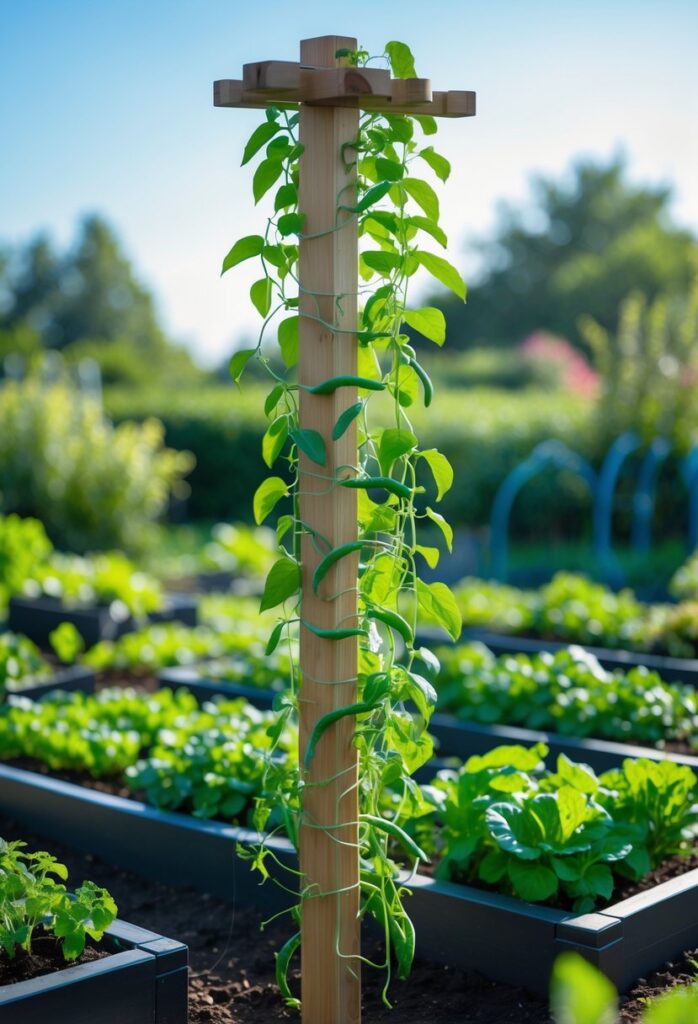
A vertical trellis helps climbing beans grow upward instead of spreading on the ground. This saves space in small vegetable gardens, making it ideal for limited areas. Beans grow healthier when supported and have better air flow around the plants.
Using a trellis also makes it easier to pick beans. Keeping the plants off the soil reduces pests and spoilage. This support encourages stronger bean production over time.
String trellises are a simple and affordable option. They are lightweight and easy to install, especially in small or urban gardens. Other options include wooden or metal frames, depending on the gardener’s needs and budget.
Vertical growing benefits the whole garden by maximizing space and improving plant health. This technique is effective for pole beans and other climbing vegetables. More detailed ideas can be found in the article on 15 proven trellis ideas for climbing beans.
3) Raised beds for root vegetables

Raised beds help root vegetables grow better. They offer loose, well-drained soil that roots need to grow straight and strong. This is harder to get in regular garden soil, which can be compacted or heavy.
Root crops like carrots, beets, radishes, and turnips do well in raised beds. These beds provide enough depth for roots to develop fully without hitting hard soil or rocks.
Raised beds also warm up faster in spring. This helps root vegetables start growing sooner. The improved drainage lowers the chance of rot or disease in the roots.
It is important to use loose soil mixes rich in organic matter for raised beds. This encourages healthy root growth and improves soil nutrients.
Gardeners new to raised beds can learn more about growing root vegetables from guides like this one on Epic Gardening. It explains best soil types and planting tips for success.
4) Succession planting of lettuce
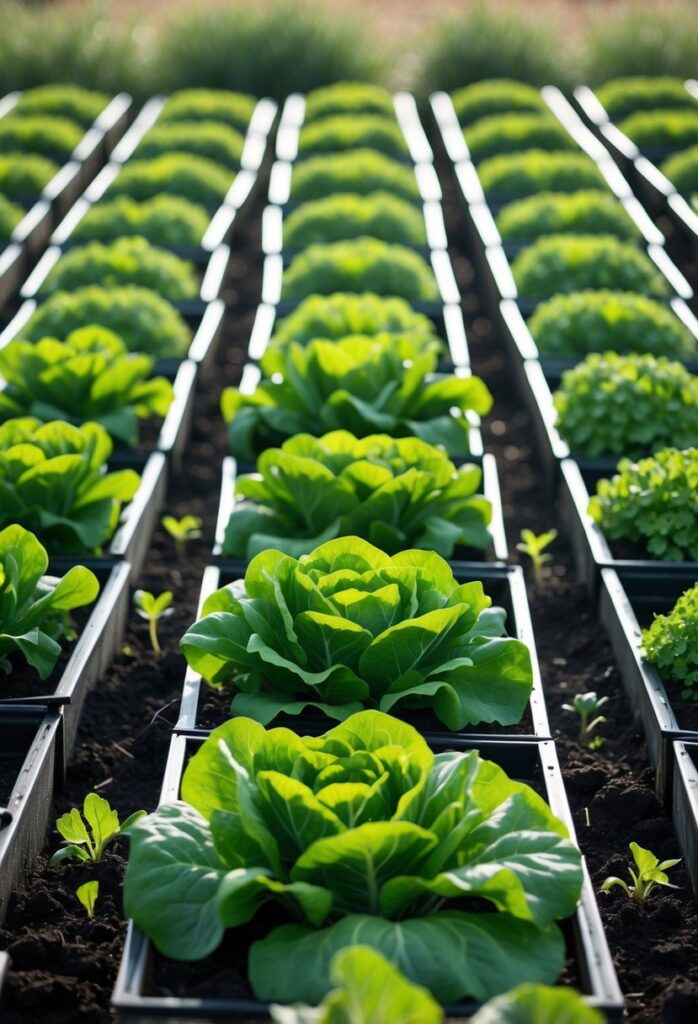
Succession planting of lettuce means planting small amounts of lettuce every one or two weeks. This way, gardeners get fresh lettuce continuously instead of all at once. It works well because lettuce grows quickly and can be harvested in stages.
Gardeners should prepare the soil well before planting each batch. Lettuce prefers cool weather and steady moisture, so consistent watering is important. Different lettuce types like Butterhead or Romaine can be used for variety in texture and flavor.
Using a planting schedule helps keep track of when to sow new seeds. Planting quick-growing varieties first and slower ones later can extend the harvest period. This method helps maximize garden space and ensures a steady supply of fresh lettuce.
Succession planting is especially helpful in small gardens. It fills empty spaces as crops finish growing, making the garden productive all season. Learn more about how to succession plant lettuce for a continuous harvest at this succession plant lettuce guide.
5) Companion planting peas and carrots

Peas and carrots grow well together in small vegetable gardens. Peas add nitrogen to the soil, which helps carrots grow better. Carrots, on the other hand, loosen the soil, making it easier for pea roots to spread.
This pairing also helps reduce weeds because peas can shade the ground while carrots improve soil structure. Neither plant competes strongly for the same nutrients, so they support each other’s growth.
Planting peas and carrots close saves space and creates a balanced environment. Peas attract beneficial insects that protect carrots from pests. Carrots can improve soil aeration, which benefits the peas.
Using peas with carrots is a practical strategy for small gardens. It helps maximize yield without adding extra fertilizer or intensive pest control. This companion planting method suits gardeners who want efficient and healthy garden growth.
Learn more about growing peas and carrots together from this companion planting guide.
6) Herbs like basil and thyme in pots

Basil and thyme are popular herbs that grow well in pots. They are perfect for small vegetable gardens or balconies where space is limited.
Basil needs warm, sunny spots and enough soil to grow, ideally a pot holding at least 5 gallons. Compact varieties like ‘Spicy Bush’ or ‘Dwarf Greek’ work well when space is tight.
Thyme is a hardy herb that thrives in small pots. It prefers full sun and dry soil, needing water only when the soil is completely dry. Thyme also grows well in hanging baskets or vertical gardens.
Both herbs add fresh flavors to meals and can be harvested continuously. Growing them in pots offers easy control over their environment and keeps them from spreading too much.
For those interested in container gardening, basil and thyme are among the best herbs to grow indoors or in small outdoor spaces because they require low maintenance and produce a steady supply of leaves.
More details about growing these herbs in pots can be found at the page on best herbs to grow in pots.
7) Square foot gardening method

The square foot gardening method organizes a garden into small, one-foot squares. Each square is planted with a specific vegetable or herb. This helps maximize space and makes planting more efficient.
This method uses less water and soil than traditional row gardening. It also requires less work overall. Gardeners can grow more food in a smaller area.
Plants are spaced based on their size and growth habits. For example, leafy greens fit tightly, while larger plants like tomatoes use more space. This careful planning reduces crowding and improves yields.
Square foot gardening works well for beginners and experienced gardeners. It simplifies layout planning and helps manage pests and weeds. The method is a good choice for small gardens and urban spaces.
More detailed information on this gardening style can be found in the Square Foot Gardening Guide for Beginners.
8) Compact pepper varieties
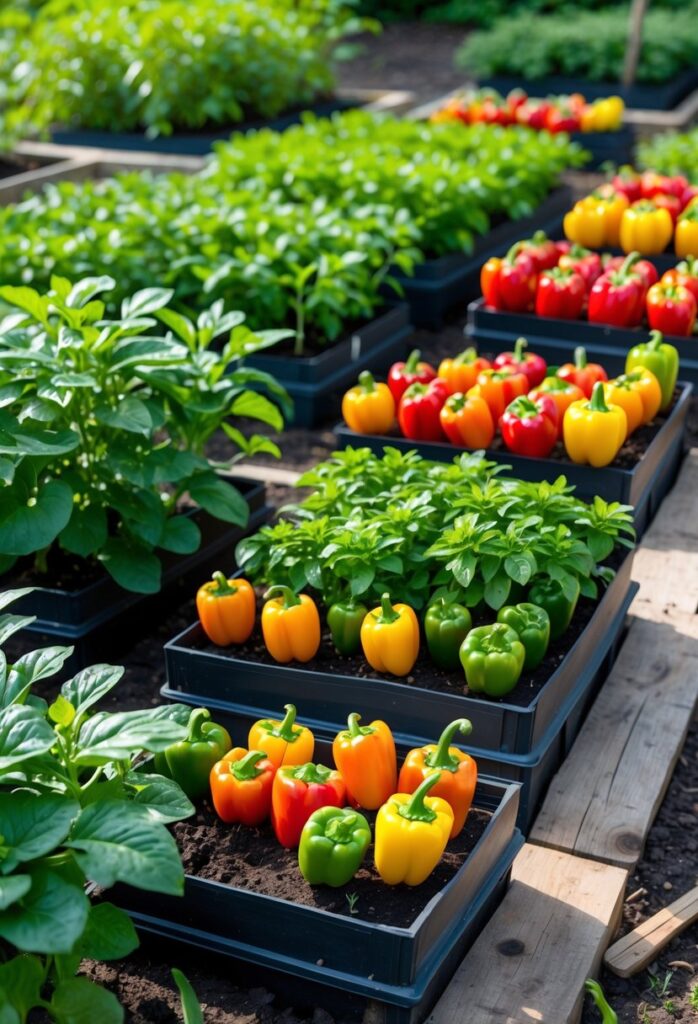
Compact pepper varieties are ideal for small gardens and container growing. These plants usually stay under 18 inches tall, making them easy to manage in limited spaces. They can produce a good amount of fruit despite their small size.
Many compact peppers come in both sweet and spicy types. Varieties like ‘Pot-a-Peno,’ a small hybrid jalapeño, grow well in pots and small garden beds. These peppers offer flavor without taking up much room.
Container gardening with compact peppers allows for easy care and harvesting. They can thrive indoors or on balconies when given enough light and proper watering. Choosing peppers suited for containers helps maximize space and yield.
For anyone with a small garden or patio, compact pepper plants are a practical choice. They bring color and taste without needing a large yard. Learn more about growing peppers in small spaces from this guide on compact pepper plants.
9) Window sill microgreens
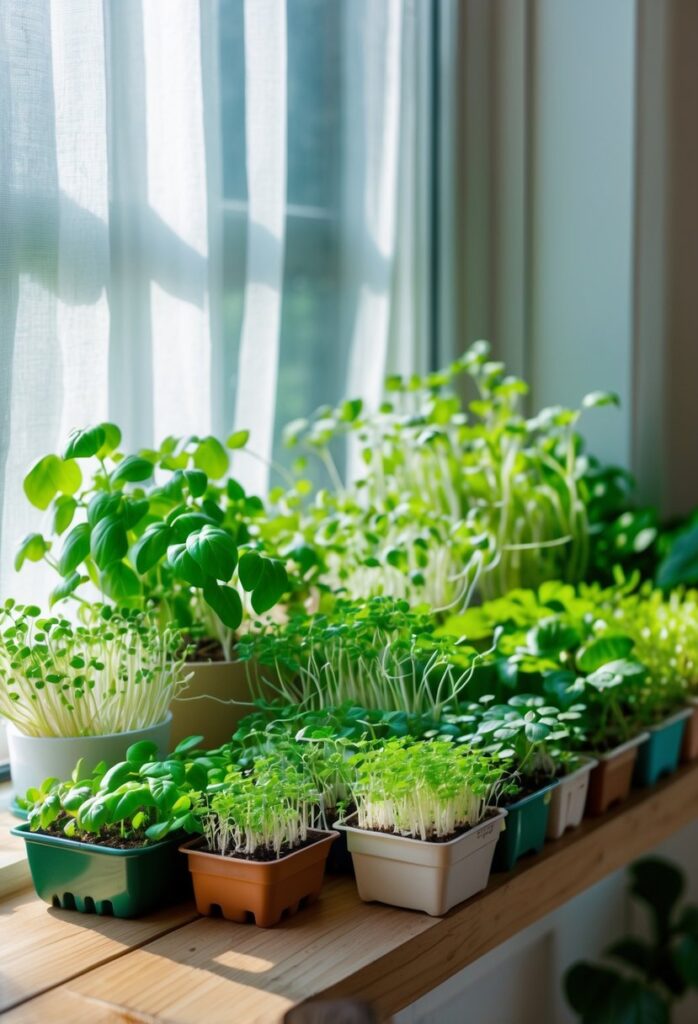
Microgreens are young vegetable greens that grow quickly on a sunny windowsill. They need little space and can be ready to harvest in just one to two weeks.
These tiny plants offer fresh flavors and nutrients. Common types include alfalfa, radish, and mung bean sprouts, which are easy for beginners to grow.
Growing microgreens requires basic supplies: seeds suitable for sprouting, shallow trays, and good drainage. A sunny window that gets at least 4 to 6 hours of light is ideal.
Watering should be light but consistent to keep the soil moist without flooding it. Regular harvesting encourages more growth.
Microgreens fit well in small homes or apartments where outdoor space is limited. They provide a convenient way to enjoy fresh greens year-round. For detailed guidance on growing microgreens on your windowsill, see windowsill microgreens growing tips.
10) Stacked strawberry planters
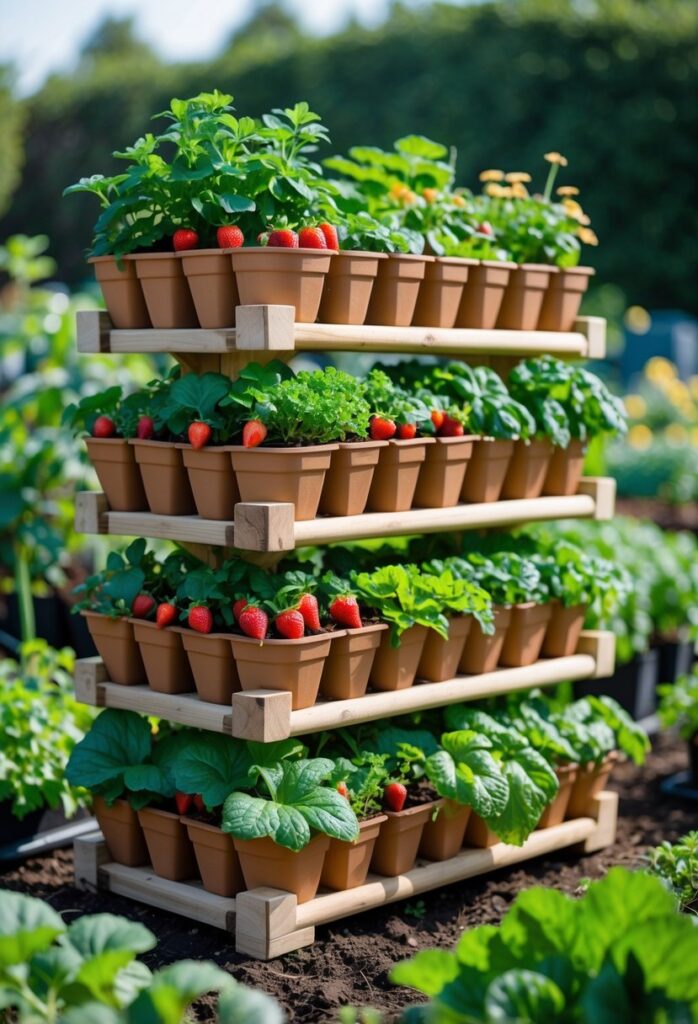
Stacked strawberry planters use vertical space to grow strawberries in small areas. They have several tiers that hold multiple plants, making them ideal for balconies or small gardens. Each tier typically includes a water reservoir to help keep the soil moist without over-watering.
These planters are usually made of durable plastic and often allow for easy stacking or customization. Some models come with wheels, which make moving the planter simple. They can also grow herbs, flowers, and other small vegetables alongside strawberries.
Stacked planters save ground space and improve airflow around plants, reducing pest issues. They also make harvesting easier since the berries are at different heights. This type of planter suits gardeners who want an organized and compact way to grow strawberries vertically.
For more details and options on stacked strawberry planters, visit this guide on 7 Best Strawberry Planters, Pots, and Towers.
11) Vertical pallet gardens

Vertical pallet gardens use wooden pallets to grow vegetables in a small space. They stand upright, making use of vertical space instead of spreading out on the ground. This method works well on patios, balconies, or any small outdoor area.
The slats in the pallet create natural rows for plants. This helps keep vegetables organized and easy to care for. It also reduces the amount of weeding needed compared to traditional gardens.
Pallet gardens are simple to build and often cost less than other garden setups. They have a rustic look that can add character to outdoor spaces. When placed against a sunny wall, they provide good light access for many vegetable types.
Common vegetables for pallet gardens include herbs, leafy greens, and vine crops like tomatoes and beans. These plants grow well upward and make the most of the vertical space.
Using pallets for vertical vegetable gardening is a practical way to grow fresh produce in tight areas. More ideas for making vertical pallet gardens can be found at 15 DIY Pallet Garden Ideas for Growing Vegetables in Small Spaces.
12) Using hanging baskets for salad greens

Hanging baskets are a smart way to grow salad greens in small spaces. They use vertical space, freeing up room on the ground or counters. This method is ideal for balconies, patios, or small yards.
Salad greens like lettuce, spinach, and arugula do well in hanging baskets. These plants have shallow roots, so they don’t need deep soil. Growing them in baskets keeps the greens cleaner and easier to pick.
The baskets can be filled with lightweight potting mix to help drain excess water. Proper watering is important because hanging baskets can dry out faster than ground gardens. Frequent checks ensure the plants stay healthy.
Many gardeners find that mixing herbs like basil or chives with salad greens in hanging baskets adds variety. This creates a convenient, fresh source of ingredients nearby the kitchen. A hanging basket garden for salad greens combines beauty with productivity. For tips on hanging basket veggies, see 15 creative hanging vegetable garden ideas.
13) Succulent ground cover with herbs
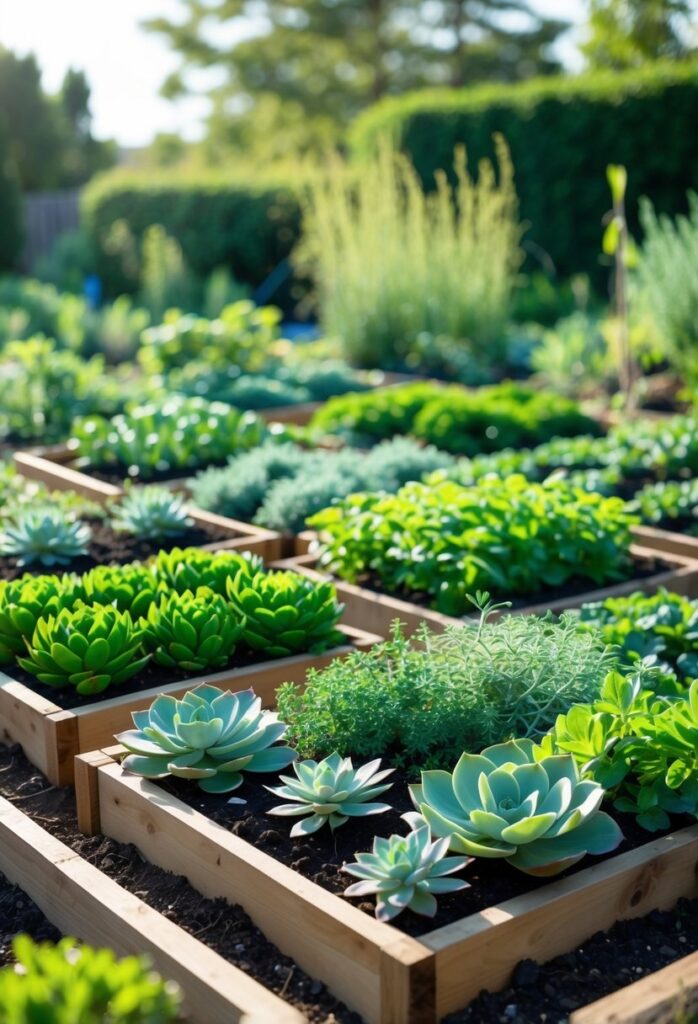
Succulent ground covers are low-growing plants that spread easily. They need little water and help keep soil moist. This makes them a good choice for small gardens with sunny, dry spots.
Combining succulents with herbs adds both beauty and function. Herbs like thyme, oregano, and chives work well as ground covers. They can fill spaces, reduce weeds, and provide fresh ingredients for cooking.
This mix also creates a varied texture and color in the garden. Succulents bring interesting shapes and bright colors, while herbs add green foliage and sometimes flowers. Together, they make a garden look full without taking up much space.
Using herbal ground covers with succulents can improve soil health. The plants help prevent erosion and keep the soil cool. They can even repel some pests naturally, reducing the need for chemicals.
For more ideas and examples of succulent and herb ground covers, see 15 Great Succulent Ground Covers For Lush, Low-Water Gardens.
14) Interplanting radishes with spinach
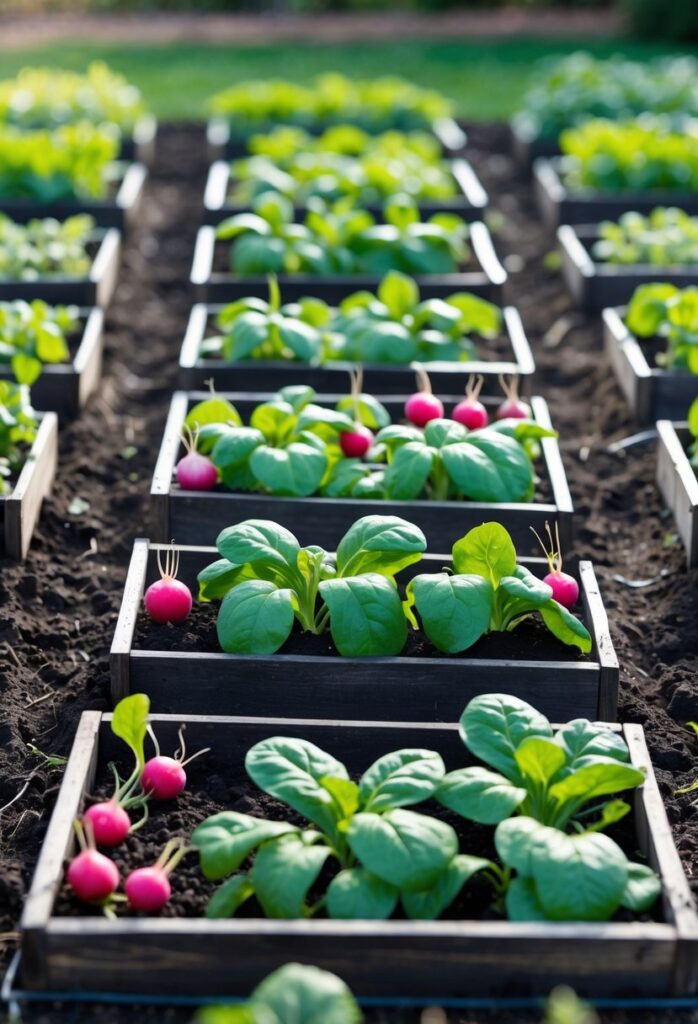
Radishes and spinach make good companions in a small vegetable garden. Radishes have roots that break up hard soil, which helps spinach roots grow better. This makes the soil easier for both plants to access water and nutrients.
Radish leaves can act as a trap for pests like flea beetles and leaf miners. These insects prefer radishes and leave spinach plants alone, reducing damage. This natural pest control reduces the need for pesticides.
Both vegetables grow well in cool seasons and have similar soil and water needs. Interplanting them saves space and allows gardeners to harvest a quick radish crop while waiting for spinach to mature.
This method creates a balanced garden system where plants support each other. For more details on how radishes help spinach with pest control and soil health, see this guide on radish companion plants for spinach.
15) Portable planter boxes
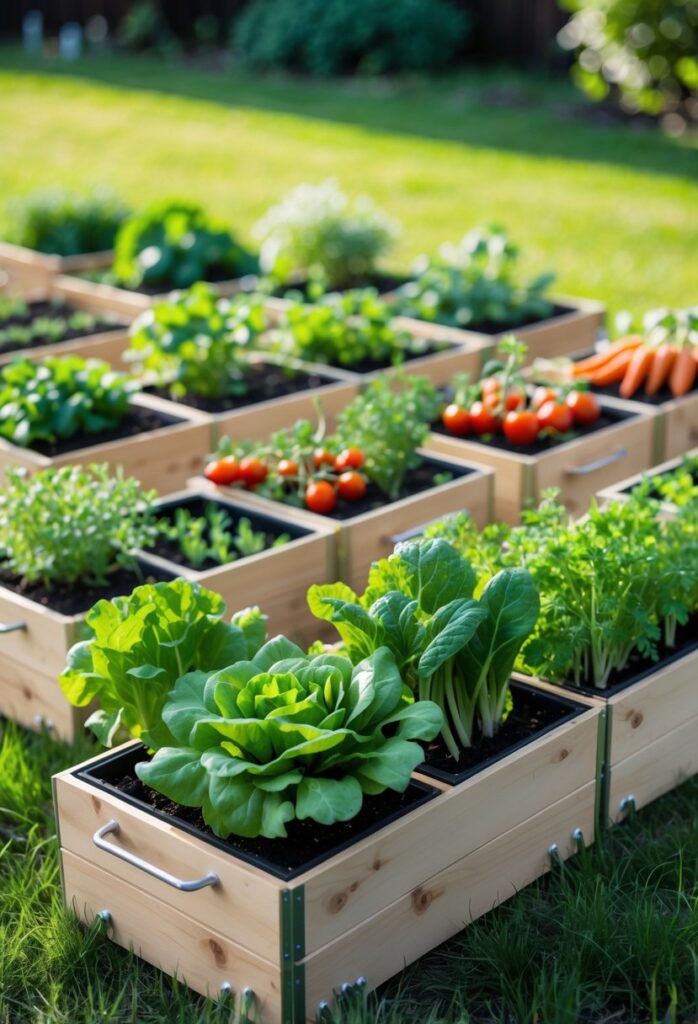
Portable planter boxes are great for people with limited space or those who want flexibility. They can be moved easily to catch the sun or avoid bad weather.
These boxes come in different sizes and materials, such as wood, plastic, or metal. Some have wheels and handles to make moving them even easier.
Portable planters work well for growing vegetables, herbs, and flowers. They are perfect for balconies, patios, or small yards.
Because they are raised, they offer better drainage and help reduce pests. Some models also include storage or drainage features.
They are simple to set up and do not require permanent garden space. This makes them a good choice for city dwellers or renters wanting a small garden.
More information on portable planter options can be found at stores like Gardener’s Supply or Target.
Essential Design Principles for Small Vegetable Gardens
Small vegetable gardens need to use space wisely, choose suitable containers, and plan plant combinations carefully. Each factor plays a key role in maximizing growth and keeping plants healthy in limited areas.
Maximizing Space with Vertical Gardening
Vertical gardening uses structures like trellises, cages, or wall-mounted planters to grow plants upward instead of outward. This method frees up ground space for other vegetables. Vining crops such as peas, beans, and cucumbers grow well vertically.
Using vertical space can also improve air circulation and sunlight exposure, which reduces disease risk. Lightweight materials like bamboo or metal work best for supports. Vertical gardening is especially good for balconies and patios where floor space is tight.
Some growers add shelves or hanging baskets to increase the number of plants. Vertical arrangements allow easy access to crops for harvesting, pruning, and watering. This strategy helps get the most out of small gardens.
Choosing the Right Containers
Containers for small gardens must fit the space while giving plants room to grow. Shallow containers suit herbs and greens, but deep pots are needed for root vegetables like carrots or potatoes. Materials like plastic, ceramic, or fabric pots have different moisture retention and breathability.
Good drainage is critical to prevent root rot. Containers should have holes at the bottom, and gardeners can add gravel for extra drainage. Consider the weight and durability of containers if they need to be moved often.
Plants with similar water and light needs should share containers to simplify care. Using raised beds, window boxes, and stacking pots increases growing area. Proper container choice improves soil health and plant productivity in limited spaces.
Companion Planting Strategies
Companion planting pairs plants that benefit each other. For example, planting basil near tomatoes can reduce pests and improve flavor. Some plants attract beneficial insects that prey on harmful bugs.
Companions also help maximize space by fitting together plants with different root depths or growth habits. For instance, tall corn can shade leafy greens underneath, while bushy beans fix nitrogen to enrich soil.
Avoid putting plants from the same family too close to limit disease spread. Gardeners should plan layout based on compatibility and harvest times. Companion planting can boost yield and make small gardens more resilient.
For more detailed ideas on small vegetable garden design, see 15 Small Vegetable Garden Layout Ideas That Maximize Space.
Maintenance and Care Tips
Maintaining a small vegetable garden requires careful attention to water, soil, and pests. Proper management in these areas helps plants grow strong and reduces problems. Consistent care makes the best use of limited space and encourages healthy yields.
Efficient Watering Methods
Watering early in the morning or late in the evening is best to reduce evaporation. Using drip irrigation or soaker hoses delivers water directly to the roots, minimizing waste and keeping foliage dry to prevent disease.
Mulching around plants helps keep soil moist and cool, reducing the frequency of watering. Container gardens need more frequent watering, as they dry out faster than ground beds.
Monitoring soil moisture regularly helps avoid overwatering or underwatering. A simple finger test or moisture meter can guide watering schedules, which is key for small space gardens where soil can dry unevenly.
Soil Health and Fertilization
Healthy soil supports strong vegetable growth. Adding organic matter like compost improves soil structure, drainage, and nutrient content.
Regularly testing soil pH and nutrient levels guides fertilizer use. Most vegetables prefer slightly acidic to neutral pH, around 6.0 to 7.0.
Fertilizers should be used to supplement nutrients and not replace organic matter. Balanced fertilizers or natural options like fish emulsion or compost tea work well in small gardens.
Crop rotation and cover cropping help maintain soil fertility and reduce disease buildup. These practices extend soil health over multiple growing seasons.
Integrated Pest Management Solutions
Controlling pests with minimal chemicals protects plants and the environment. Regular inspection helps catch pest problems early before they spread.
Encouraging beneficial insects, such as ladybugs and lacewings, aids natural pest control. Planting flowers like marigolds nearby attracts these helpful insects.
Physical barriers like row covers or netting protect plants from insects and birds without chemicals. Removing weeds promptly reduces pest hiding spots.
Using organic sprays, such as neem oil or insecticidal soap, safely controls pests when needed. Rotating crops and choosing pest-resistant varieties further reduce pest problems in small gardens.
For more detailed advice on maintaining healthy small gardens, see tips on vegetable garden care and maintenance.
Frequently Asked Questions
Small vegetable gardens work best when planned carefully. Using containers, vertical supports, and raised beds can increase the growing area. Choosing the right vegetables and planting methods helps gardeners get the most from limited space.
What are the best layout designs for beginner vegetable gardeners with limited space?
Beginners should start with raised beds or container gardens. Raised beds are easy to manage and perfect for root vegetables like carrots and radishes. Containers work well for tomatoes and herbs.
Square-foot gardening, which divides a small space into grid sections, also helps organize plants and maximize yields.
Which vegetables are most suitable for growing in small gardens?
Compact vegetables are best. Cherry tomatoes, lettuce, radishes, peppers, and herbs take up little room and grow well in containers or tight spaces. Climbing beans can be grown vertically to save space.
How can one optimize space in a small backyard for a vegetable garden?
Vertical growing systems like trellises help use height instead of just ground area. Succession planting, or planting crops after one is harvested, keeps the garden productive all season. Companion planting, such as peas with carrots, can improve growth and save space.
What are the ideal planting strategies for vegetables in a balcony garden?
Containers that fit the balcony size are essential. Using vertical trellises for climbing plants like beans or tomatoes gives more growing room. Small leafy greens like lettuce work well in pots and can be planted in succession to extend harvest.
How should a small garden be planned to maximize yield in a limited area?
Planning includes selecting the right crop mix and layout. Raised beds for root vegetables, containers for tomatoes, and vertical supports for beans make the best use of the space. Regular watering and soil care keep plants healthy and yields high.
What are the easiest vegetables to cultivate in confined spaces for novice gardeners?
Lettuce, radishes, herbs, and bush beans are easy to grow. These crops require little space and are less demanding. Tomatoes also grow well in containers with proper support and regular care.
For more detailed strategies on maximizing small garden spaces, see tips on easy vegetable gardening for small spaces.
